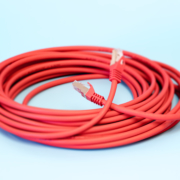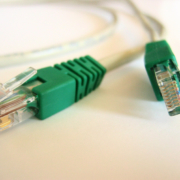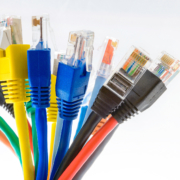Is Cat7 backward compatible?
What is Cat7?
Is Cat7 backwards compatible? First let’s discuss what Cat7 is. Category 7 or Cat7 is a data cable developed with improved performances in comparison to its predecessor (Cat6a). Cat7 cables are designed to support 10Gbps over 100m length. However, the cable has shown it can achieve higher speeds at a shorter length. For instance, over 50 metres, it can support up to 40Gbps and over 15 metres, the cable has produced result of 100Gbps. Although this maybe true, its important to highlight that these results are not ratified, and the performance will highly depend on your hardware set-up.
Category 7 cables have a bandwidth of up to 600MHz. Cat7a cables are up to 1000MHz. Compared to previous categories, these cables are at least six times higher in bandwidth. For example, Cat5e’s bandwidth is 100MHz. With this in mind, Cat7 will be the best option to future proof your business.
Will Cat7 be backward compatible with all my hardware?
Cat7 data cables are backward compatible with Cat5e, Cat6 and Cat6a cables. Category 7 offers 90 – 100m, 4 connector channel using shielded cabling which can transmit signals up to 600Mhz. Equally important, the performance of your system is only as good as its weakest link. If your hardware is outdated and doesn’t have the capacity to handle the speeds delivered by Cat7 cables, the performance of your system will remain the same.
Cat7 cables are commonly terminated onto GG45 connectors which in addition to the standard 8 termination connectors, they have 4 additional points of contact. Previous categories such as Cat5e, Cat6 or Cat6a, the connectors are just the standard 8 points of contact. However, Cat7 can also be terminated on to an RJ45 connector, making them backward compatible.
Cat7 Shielding
These data cables have four twisted copper wire pairs, first the pairs are shielded individually and then the cable is shielded for extra protection. The shielding of a data cable was incorporated to minimise crosstalk and system noise. The two methods of shielding are:
SSTP – Screen Shielded Twisted Pair
SFTP – Screened Folded Twisted Pair
Category 7 cables differ from previous categories in many ways but one of the main advantages is its ability to protect twisted pairs. As a result, the cable has a significant improvement with signal loss and corruption.
Is Cat7 backward compatible? (Examples)
Cat7 Cables are installed into the fabric of the building however, Cat6a termination modules are used. Commonly, this is done to lower the initial cost, or it can be due to manufacturer shortages with Cat7 & Cat7a connectors.
A full structured cabling installation is undertaken, using Cat7 Cables and GG45 modules. However, the patch leads used are Cat6a. Because the limitation on longer runs is 10Gbps, Cat6a patch leads are sufficient and a more cost effective. This method has the cat7 cables in place for future upgrades.
A full Cat7 installation is undertaken into a new building, but the client decides to use their existing hardware and patch leads (Cat5e, Cat6, or Cat6a). This will result is in the system running at its old speed until the client upgrades the hardware or patch leads.
What is the difference between Cat7 and Cat8?
Cat7 and Cat 8 cables manufactured with the same shielding, designed to reduce exterior noise and cross talk. As a result, these cables can perform at a much higher level than previous categories. However, Cat8 Bandwidth is up to 2000Mhz, which is double the bandwidth of Cat7a. The main difference between the two categories is the speed and length of cable. Cat8 cables are restricted to 30 metres in length, and this can deliver speeds between 25GBps and 40GBps. When choosing between the 2 categories you must consider the use of the cable and the required length.





